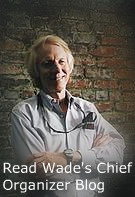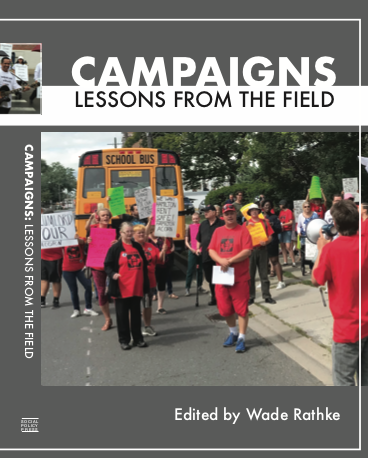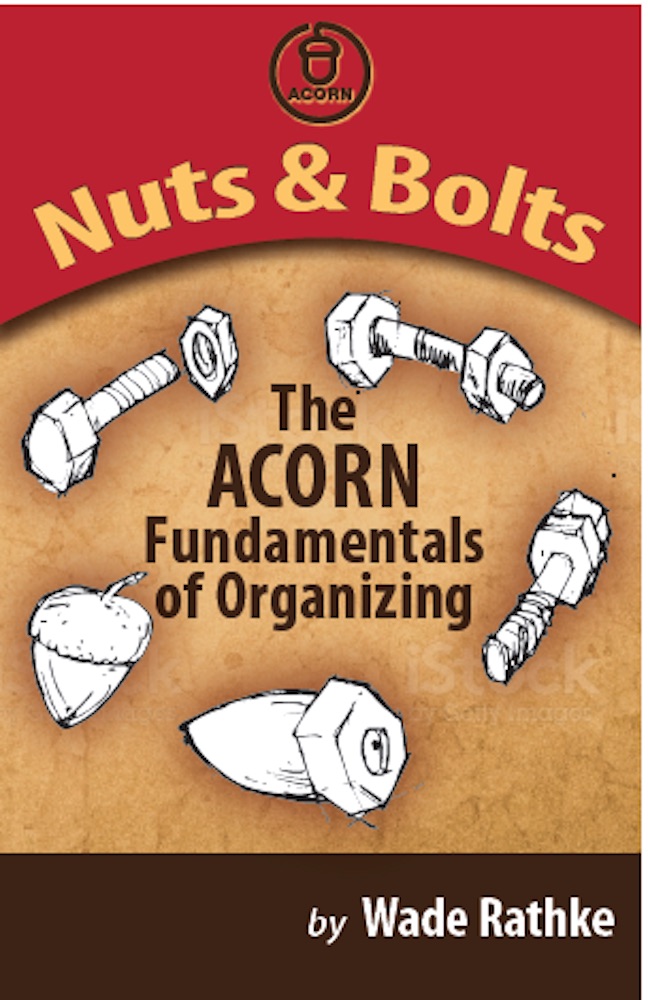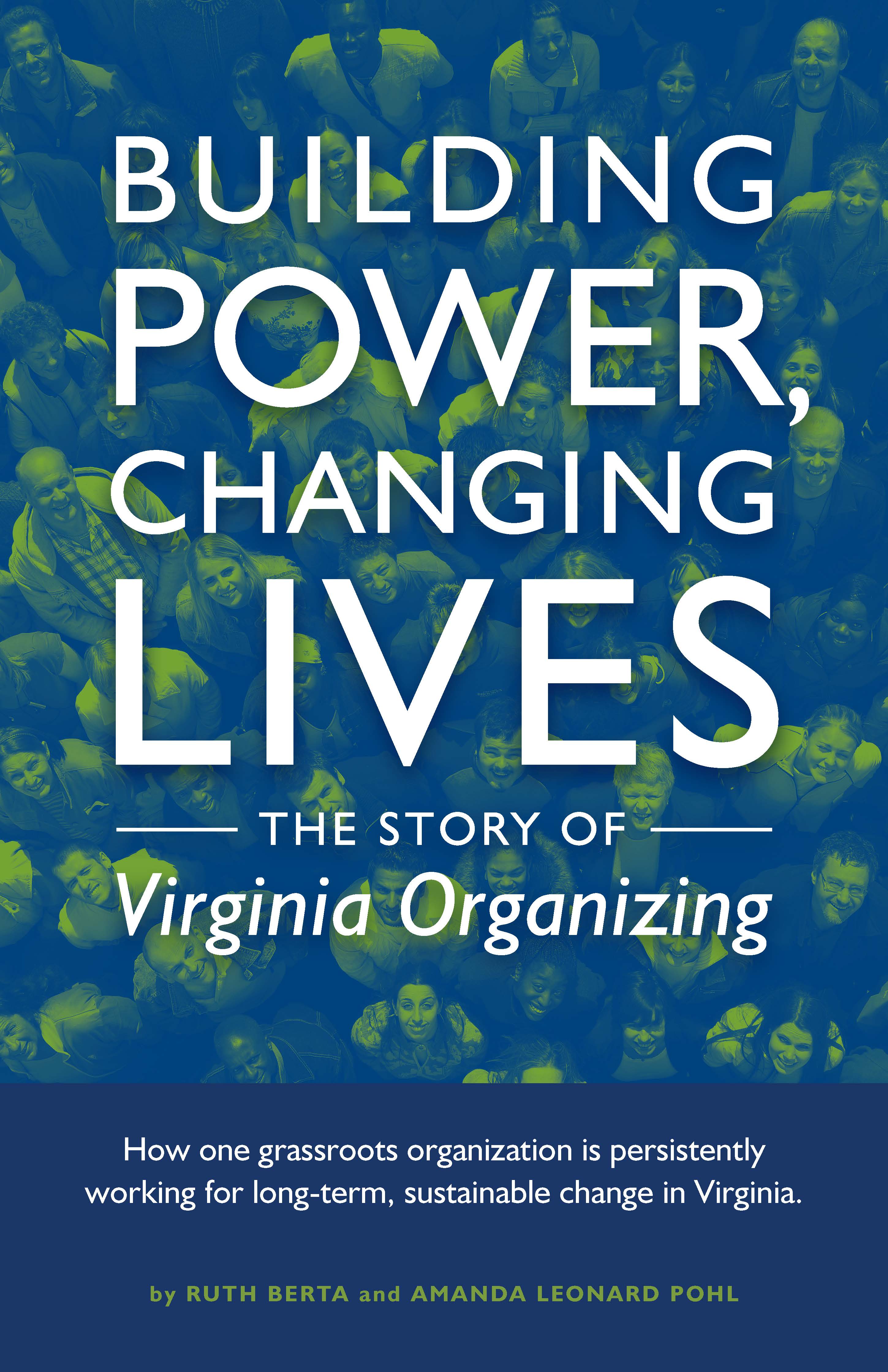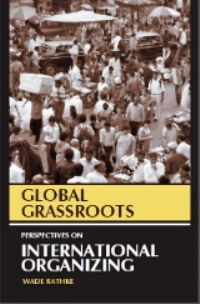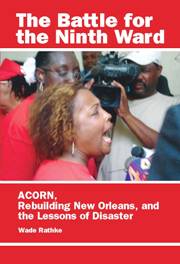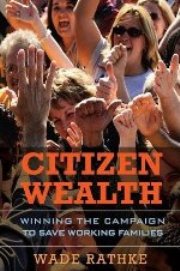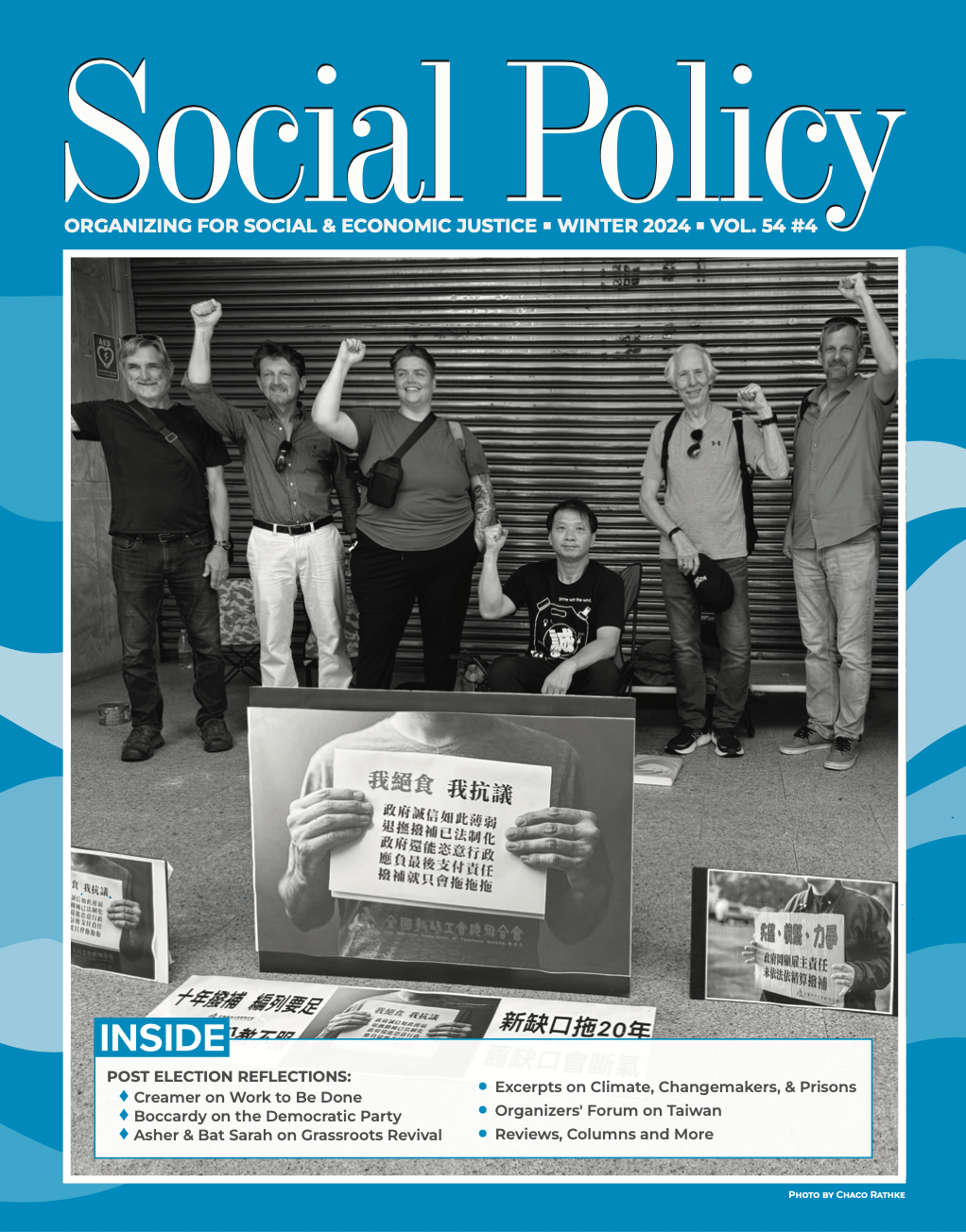EXCERPT - Organizing Can Fix Our Power Deficit
Written by Jane Holgate and John Page
From Changemakers: Radical Strategies for Social Movement Organizing
By Jane Holgate and John Page
Organizing starts with people
‘There are two forms of power in the world, organized money and organized people’. Given that we generally don’t have the money our job, as social movement activists, is to organize people. This isn’t just a question of convincing individuals of desired change and getting them to come along to a public meeting or a protest march; organizing people involves surfacing their latent agency and convincing them that they are the architects of the change they’re looking to make. As the song from Sweet Honey in the Rock – the a cappella group that grew out of the African American freedom struggle – so accurately affirm, ‘we are the ones we have been waiting for’.
In society, the poor, the dispossessed, the oppressed and the marginalized are led to believe that their problems are either bad luck, or their own fault. Working-class communities, robbed of relatively well-paid industrial jobs by deindustrialization, are told they haven’t adapted to the changing world, or they’re not agile enough, or don’t have the right attitude when, for example, they refuse to work for the minimum wage jobs in the service or care industries. Communities blighted by poverty, discrimination, poor health and anti-social behavior are told that there’s something inherently wrong with their community, rather than there’s a lack of opportunity for those within it.
Today, there perhaps isn’t a widespread belief that if we get organized, we can win. The confidence we saw in past decades of struggle has been replaced, for many, with a sense of powerlessness – a feeling of being at risk in a tumultuously changing world. Consequently, one of the first tasks in organizing is to impress upon people that they can shape the world around them if they act collectively. Only when they believe it’s possible are people able to act to force the boss, the local council, a big company or even the government to change their mind.
The most radical thing that we can do today in terms of facilitating a complete or dramatic change in the balance of power in society is to encourage our communities to believe that they can, and indeed should, take it upon themselves to shape the society around them.
Understanding theory of change and its importance to effective organizing
When we are first motivated to act to change the world there’s an understandable tendency to either copy what other people are doing or do what is already familiar. Common forms of action are starting a petition, holding a protest, writing to our local Member of Parliament or councilor, calling for a boycott or, in a workplace context, balloting for industrial action. Often, in a hurry to get started, we don’t give enough thought as to why the problem – for example, anti-social behavior on an estate, climate degradation, exploitation of child labor, bullying at work, low wages, the housing crisis or institutionalized discrimination – exists, and what forces sustain it.
If we do stop to analyze the situation, we often find the problems we seek to address endure either because they meet the needs of a powerful lobby, or because the actions needed to mitigate them conflict with the interests of the rich and powerful.
Naturally, when we talk about power, it may operate at different scales, for example, the reason why an employer turns a blind eye to the bullying of a particular manager will be on a different scale to a systemic international failure to address climate change. However, at almost every scale, from the hyper-local to the international, those with power have proven adept at using their influence to prevent the change required to eradicate the variety of injustices that impact upon our lives, anger us or are just plain wrong.
If we are to be effective at ending a particular form of oppression or changing adverse circumstances and winning a better world, rather than merely protesting at injustice, we need to think strategically and seek to understand the forces reigned against us and in doing so develop a ‘theory of change’. Put another way, we need ask ourselves: how might we shift the balance of power in our favor?
The development of a theory of change is the building block to strategic choice. Once we have identified which decision makers we need to persuade or, more often, force to take a different approach, we can then begin to ask: ‘What would make this decision maker exercise their choices in a way that was less damaging?’ And then: ‘How can we establish a plan to marshal our forces, those we have, and those that we can build, to destabilize the current equilibrium of power?’
Many of us have of course been subjected to ‘strategic plans’ at work, with key performance indicators and other constraints. But planning for liberation is a different game altogether. Rather than trying to constrain people’s activity we are seeking to encourage their creativity and imagination. This is not about managerialism, but rather co-creating a plan within which we each contribute both ideas and actions.
Information deficit model vs power deficit model
While very few people would articulate their theory of change in this way, the dominant approach to calling for change, illustrated by the actions of aspiring changemakers, is often the information deficit model. This approach leads to people thinking perhaps we need some compelling new research, or some heart-rending case studies where people living with the consequences of the problem testify as to the adverse impact on their lives. Unfortunately, because a problem is so seldom based on an information deficit, simply amassing more research, testimony and information about the issue generally doesn’t lead to change.
With an information deficit model, the more harrowing the story, and the more incapacitated the ‘victims’ of this injustice are, the more compelling the need for others to act on their behalf. The whole process risks feeding what – borrowing from psychology – has become known as ‘savior syndrome’, where the oppressed are seen as objects of our compassion, rather than agents of change.
In contrast, in a power deficit model of change, our objective is not to reduce the subjects of this injustice to the role of begging for help, but to support them to develop and exercise their inherent change-making capacity. It’s not that evidence isn’t necessary, merely that it isn’t sufficient to effect transformational change. A well-reasoned argument might help to build your base, inoculate your supporters against misinformation, or help you to mobilize.
In the power deficit model of social change, we recognize that those of us who experience a particular injustice tend to have less power than those who wish to sustain it. An example is Amazon, where the chief executive, Jeff Bezos, is one of the richest man in the world; he was the world’s first ‘centibillionaire’ – someone whose net worth is more than 100 billion pounds – yet the same company advertises jobs working unsocial hours in its UK warehouses at £10.40 per hour. In the case of Amazon, there’s clearly a power deficit. The level of exploitation of workers is high, which is why the CEO is so rich and powerful.
It can’t be the case that Bezos doesn’t know that the reason he is outrageously rich is because his company employs over a million people, many of whom are living in poverty, on dismally low wages. For wage rates to go up and exploitation to go down what’s most needed is not a heart-rending video of Amazon employees talking about how hard it is to make ends meet, but a union that is able to take action to force Amazon to pay a better wage. Making a video about the condition of Amazon workers might be a tactic you use to help workers realize that their problems are not because they ‘aren’t very good with money’, but because they are paid a shamefully low wage. Doing this might also help to build public support for any action. But in a power deficit model, the value of such a video is measured by how much it encourages individuals to collectivize and act, not its potential to alert the decision maker to the consequences of their decision.
This brings us to the question of how we build our movement’s relative power. How do we build our power, and how do we reduce the power of our opponent? Of course, there will be other factors at play, such as issues of leadership – ours and theirs, opportunities that arise without warning, and moments when our concerns are unexpectedly thrust into the spotlight, but ultimately the question of social justice is about rebalancing power.
Once we evaluate the different sources of both actual and potential power, then an effective strategy may be built by asking ourselves a range of questions, such as: How do we challenge our opponent at the points where they are weakest? How do we bring new forces into the play that will support our cause? How do we persuade, or if necessary, force, supporters of our opponent to withdraw from the conflict?
Equality as central organizing practice
Most organizers will identify themselves and the change they seek to effect as being part of a social justice movement. They may be acting against racism, sexism, climate change, the housing crisis, exploitation at work, or a range of other manifestations of what Audre Lorde refers to as ‘the same disease’. Yet, too often, within organizational structures and practices there are examples of the very same patterns of oppression that people are seeking to end.
Some people mistakenly believe they are part of a ‘single-issue’ campaign and try to isolate their movement from the ‘distractions’ of addressing ‘other issues’. Given the complexity of the forms of oppression that are manifest within our society, and the extent to which we are all socialized to find them normal – even those oppressions that directly impact upon us – it’s no surprise that social justice organizations struggle with what has come to be known as the intersection of oppressions.
For some people, so long as the key focus of the organization is not undermined by the toleration of other forms of oppression, then those oppressions tend to go largely unchallenged. There are too many examples to list, but at times trade unions have been not just institutionally racist and sexist, but on too many occasions overtly so. Race equality organizations have at times been notoriously sexist and the environmental movement far too slow to recognize that the climate crisis is racialized. Trade unions have been struggling, some with more determination than others, to address under-representation within their structures. Women, racialized minorities and disabled members are often absent or under-represented, while LGBTQ+ members are, to varying degrees, invisible.
It’s not a blueprint!
In contrast to providing a set of rules or step-by-step guide, real life campaign experiences––messy and confused as they often are–– illustrate the complexities and contradictions that are part of the journey of a successful campaign. There aren’t fixed rules when it comes to organizing, but we can reflect and learn from the many and various approaches to organizing––allowing us to consider what ‘fits’ best in the specific circumstances of a particular campaign.
This process of constant critical and honest reflection throughout campaigns and struggles should ensure we don’t continually repeat the same mistakes or adopt the same previously unsuccessful tactics, hoping that we just might be successful the next time. A regular mistake is to fall into the trap of using a great tactic that worked previously because it surprised your opposition, because the next time it is unlikely to come as a surprise and our opposition may now be fully prepared.
The odds are often stacked against us, so we need to be smarter if we are to be effective, but, if we take the time to plan then there are a whole host of tactics and strategies that we can use that will give us a better chance at winning. We need to know our opponents as well as they know us, but we also need to go off the ‘risk register’––to do the unexpected––to create an element of surprise. More thinking, more planning, more strategizing, more playfulness, and more involvement of wider groups of people is often what is needed for effective social movements, and this book, looks at examples, as well as theories, of how this can be achieved.

